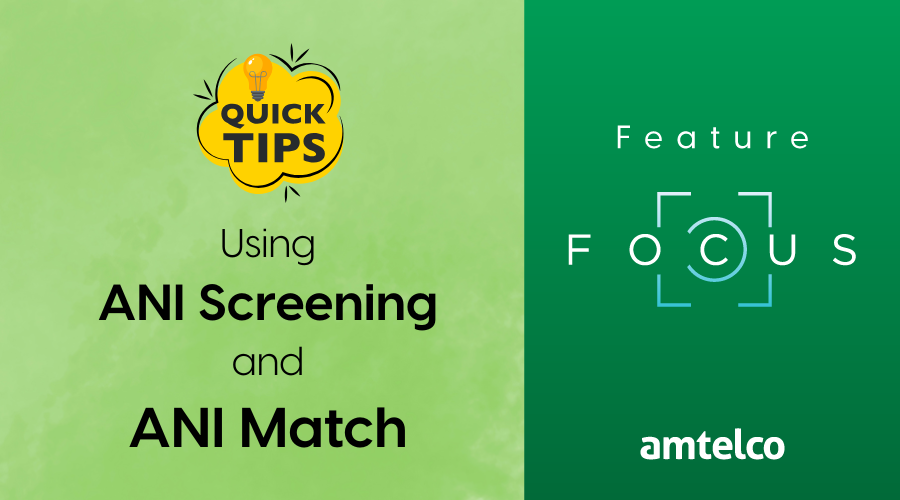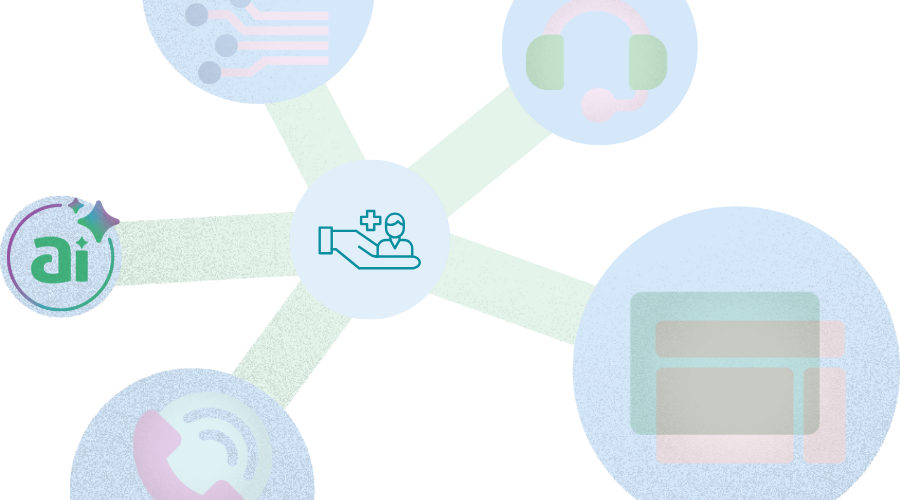Did you know that the average hospital has relationships with more than 1,300 different vendors? Tools and technologies from various vendors are often disconnected and difficult to manage – even communication solutions meant to streamline workflows. Healthcare leadership may not realize that the software and apps used by their call center can help unify and simplify communications throughout the entire organization.
Call center operators are the information hub for patients, medical personnel, and other stakeholders. Agents access data from multiple sources via highly interoperable omnichannel hospital contact center software and apps – which work together as a single solution.
This article examines three scenarios where a hospital’s contact center platform helps to unify and simplify communications related to on-call schedule management, secure messaging, and automation.
Unify on-call schedules and communication.
Hospital on-call schedules are complex. Miscommunications and delays can be disastrous for patients and health systems. An article from StatPearls entitled, Medical Malpractice notes, “Weekends, holidays, and nights are a particularly treacherous time for physicians because of a lack of communication: Many lawsuits are filed because the physician covering the weekends, holidays, or overnight failed to communicate.”
When supervisors at Providence Swedish in Washington state noticed an uptick in errors related to nighttime on-call communication inefficiencies, they discovered the issues stemmed from an outdated, disconnected system, “We had our on-call schedules in several different scheduling platforms from three vendors,” says Brenda Frieboes, On-Call Manager for Providence Swedish. “There wasn’t a way for a general announcement to go out when a provider had a schedule change.”
After updating to a comprehensive contact center platform with an integrated on-call scheduling solution, staff at Providence Swedish can now instantly contact the correct on-call personnel via their desired contact methods. Updates are sent in real-time via automated notifications, and a complete audit trail is kept of all schedule updates for custom reporting.
Medical professionals are dedicated to patients, but being on-call can be exhausting – and dangerous to staff and patients if not managed correctly. Organizations are focusing more on their staff’s mental health and well-being. Schedule flexibility plays a significant role in combating burnout, recruitment, and retention.
Robust on-call scheduling software helps to ensure on-call assignments are mindfully assigned and provides useful management features such as:
- Advanced notification of unfilled schedules.
- Accessibility for staff to enter and update their own schedules.
- Adding on-call schedules to personal and mobile calendars.
- Automated, real-time updates.
- Integration of on-call schedule information with a secure messaging app.
Simplify critical communications with secure messaging.
There are mountains of crucial healthcare data that need to be communicated on a daily basis. Healthcare personnel can become overwhelmed with the number of notifications they receive for these critical communications. Studies have revealed that clinicians can receive well over 100 alerts per day. Unfortunately, well-intentioned tech can add chaos, increase bureaucratic tasks, and complicate communication. Integrated secure messaging apps can help organizations consolidate alerts and harness data to improve the flow of communication, better care for patients, and reduce alarm fatigue.
When using an integrated secure messaging app, data from EMR HL7 messages, ADT messages, smart beds, nurse calls, appointment desks, diagnostic communications, and housekeeping can be instantly sent to appropriate staff via technology already used by the organization – such as Vocera badges or IP phones from Cisco – or personal devices. The number of devices staff carry can also be reduced when direct notifications from different platforms are routed to a single smart device.
HIPAA-compliant secure messaging apps offer a lot of flexibility by enabling staff to easily share texts, photos, videos, or voice recordings via mobile phones, smartwatches, tablets, laptops, and desktop computers. Timestamps indicate when messages were delivered, read, and completed. Administrators have access to full reporting for every message sent to ensure follow-through and accountability for all messages.
Automate notifications and organizational processes.
Errors are not about the people who make them – they are about the process. Automated processes help reduce mistakes and time-consuming administrative tasks. Automatic notifications are instantly sent to staff for everything from emergencies to hospital bed turnover, and even everyday reminders.
Integration engines that are built into the contact center software facilitate the exchange and sharing of information. More efficient workflows can be established when seamless communication improves processes, “We automate our nuclear medicine program and procedures using our call center software,” states Alicia Wise, former IS Project Coordinator for AnMed Health in Anderson, SC. “When a patient is scheduled for a test, the information needed by our isotopes vendor is sent automatically. This automation speeds up the process for the patient, generates revenue for our organization, and saves any costs that would have been incurred if the process was put on hold or standby because of communication delays.”
Telephone outages, power outages, and natural disasters can happen suddenly and unexpectedly. Organizations that involve their contact center in their disaster response and business continuity plan know communication failure is not an option. Automated contingency communication plans ensure seamless operations during a disruption with:
Web-based notifications. Browser-based mass notifications enable operators to create, edit, and trigger alerts from virtually anywhere to contact the appropriate personnel in crisis situations.
Hosted emergency access. Hosted emergency access service provides a fast and easy failover system at a secure, geographically separated location. Automatically maintain essential call-handling functions during a telephone outage, power outage, or natural disaster.
Network and systems backup. Network backup provides the ability to have a live standby server in place with a current database. The automated Windows system backup tool schedules routine data backups.
“In the event any of our clinics has a power outage, their calls automatically roll to us at the contact center. So, we provide our organization with an invaluable strategic service. We have a lot of plans in place, and we’re always prepared,” states Rossi Fraenkel, Business Team Lead for Allina Health in Minneapolis, MN.
A healthcare system’s core business is patient care. When communications are unified, simplified, and automated, it helps medical personnel focus more on their patients.





